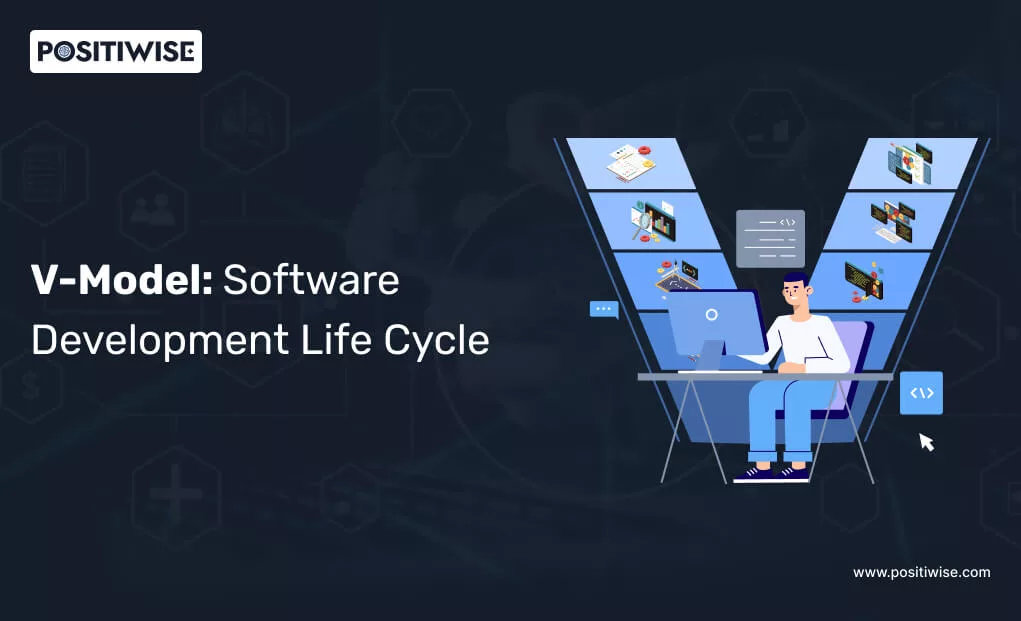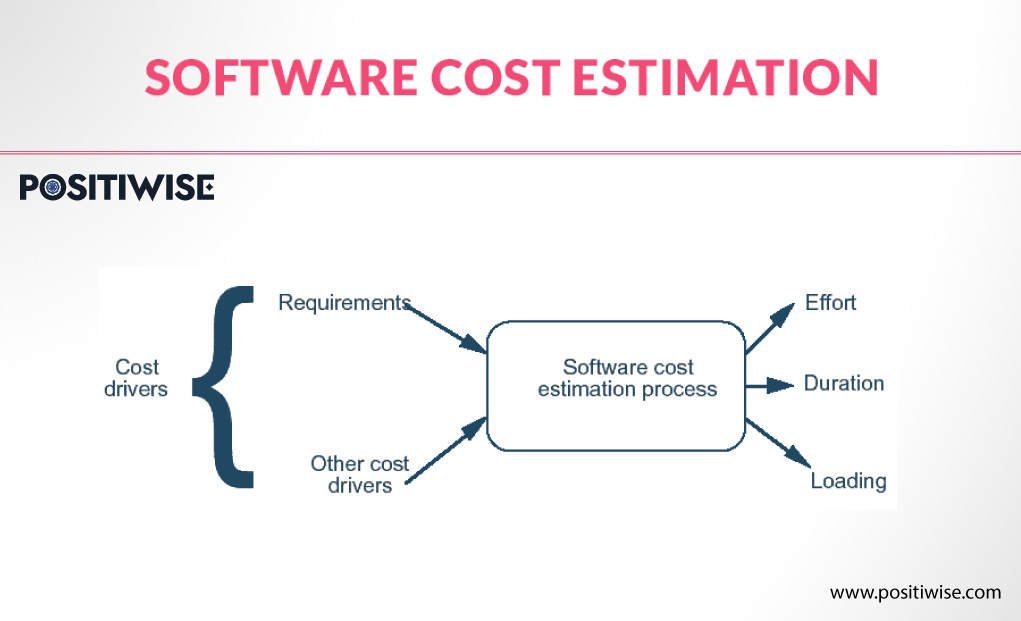Quick Overview:
Every stage of development includes a corresponding testing step that verifies the product fulfills its requirements and operates as intended. In the blog below, we will explore the various characteristics and features of the V-model SDLC, along with its benefits.
Introduction
Isn’t it annoying to discover manufacturing problems later on? At that point, the V model entered the realm of software testing. Here is our summary of the V model to help you grasp the What and Why of the V-Model: SDLC. We also discuss the benefits and drawbacks of the V-model to aid in your process implementation.
The V model of SDLC is a well-known and organized method in software engineering that adheres to a methodical and precise procedure for creating high-caliber software. The software development life cycle is viewed as a whole, including requirements collection, creation, execution, evaluation, and maintenance. In software engineering, the sequential and simultaneous phases of creation and verification ensure a thorough and rigorous approach. They constitute the structure that gives rise to the V-model SDLC.
What Does the V-Model SDLC Entail?
An SDLC methodology known as the Verification and Validation Model, or V Model, prioritizes thorough testing at the beginning of the development process. The V-shaped visual depiction, where the development processes on the left (verification) mirror the equivalent testing phases on the right (validation), is where the name of the process originates.
Software development is split into four categories under the V Model: conception, execution, integration, and certification testing. This methodical approach guarantees that every development phase has a distinct testing counterpart, resulting in software of the highest caliber.
The V-model’s techniques allow for early testing for small software development increments. Early bug identification lowers expenses, expedites development, and enhances product quality. Continuous deployment and integration make sense for the strategy. This means that the SDLC phases must be finished one after the other before moving on. It adheres to the waterfall model’s sequential design approach. The device’s testing is scheduled to coincide with an appropriate stage of development.
Phases of V-Model Verification
The process of assessing the product development process to make sure the team complies with the specifications is known as the verification phase. Business requirements evaluation, system analysis, software framework design, module design, and coding are some of the stages that make up the verification phase.
User Specifications / Analysis of Requirements
Before beginning construction, a person must gather specific information about things like financial options, a suitable location, the best contractor for the job, building supplies, water and electricity availability, etc.
Likewise, before initiating any software project, the government would have to collect specific data, such as having a thorough conversation with clients to ascertain and comprehend their precise needs and expectations regarding the product. It is necessary to analyze the needs that have been acquired, improve them, and produce precise, consistent, and clear requirements. These requirements are often presented in the form of requirements specifications or requirements definition papers.
Both the functional and non-functional needs for the product, as well as their priority, will all be recorded in this document. The stakeholders formally approve the requirements paper, which serves as the foundation for all subsequent work. Test cases for the user acceptance requirements are created based on this. The important players in the requirement analysis stage are the clients/stockholders, company analysts, and project managers.
System Requirements
The following stage, or system requirements, starts in earnest when we have gathered the precise and comprehensive product needs. The following step, known as the Functional Requirements Specification or System Requirement Specification, starts with the inputs from the Requirements Specification.
The user requirements are transformed into various features that the final product should have by Business Analysts and Developer Leads. Teams will review and finish the hardware specifications, resource needs, and communication configuration for the product under development during the system requirement phase. The system requirements phase serves as the foundation for developing the system test strategy. These specifications are divided into several characteristics, which are then aggregated. In this phase, each feature is given a priority.
Worldwide and High-Level Design
The High-Level Design (HLD) phase is another name for the global design phase. In this phase, each feature is once again divided into distinct modules. Using the components divided during the system requirements phase as input, architects, programmers, database designers, and other necessary individuals create an overall high-level technical design. Every module in the HLD was designed with a specific purpose in mind. During this phase, integration tests may be created and documented with the use of this knowledge.
Low-Level Design / Detailed Design
The Technical Specification, or HLD, is used as the input in the following step. The comprehensive design specification contains information on the kinds of data items that should be gathered, how they should be integrated, how business rules should be followed, and how to store the data. Another name for this complex design specification/document is Low-Level Design. Unit tests for each module’s internal low-level design can be created concurrently during this phase.
Phases of V-Model Validation
Dynamic analytic techniques and testing are used throughout the validation process to make sure that the software item satisfies the needs and expectations of the client. Unit testing, testing for integration, system testing, and acceptance testing are some of the phases that make up this phase.
To find faults at the code or unit level, the team creates and carries out unit test strategies during this phase. The tiniest components, like program modules, are tested to make sure they operate properly when separated from the rest of the code. The purpose of the integration testing stage is to verify that groups that were established and tested separately can coexist and interact with one another by carrying out integration test plans that were defined during the architectural design process.
Phases of Implementation and Coding
Using the Low-Level Design Specification as a guide, developers or programmers begin to implement the design. During the coding/ implementation phase, each module created during the detailed design phase is coded. The coding is done according to the norms and rules of the language being utilized. Before the assembled version is checked into the source repository, the produced code is subjected to many code reviews, feedback loops, implementations, and performance optimizations.
Exploring the Pros and Cons of V-Model of SDLC
When starting a new project, many project managers provide their teams with structure using the V-model. The following are some benefits and drawbacks of using the V-model in software development:
| Pros | Cons | Relevant for Project Having |
|---|---|---|
| Risks and defects in the software are easily discoverable in the initial stages. | Inflexible, cannot embed changes | Fixed requirements |
| Flawlessly understandable | Modifying the scope can lead you to expand the budget and increase complexities. | The target of producing a small and medium scale application |
| Easy to maintain and implement | It takes more time for software development than other software development models. | Experts with experience in furnishing similar projects |
| Saves time, cost, and resources | ||
| The team can complete both verification and validation of the app | ||
| Assures a higher probability of success |
Discover the Main Characteristics of The V-Model of SDLC
For small- to medium-sized software projects with unambiguous requirements, it is recommended that the V-Model be applied. The V-Model is the better option for projects if the acceptance criteria are appropriate. The V-Model is helpful in situations when technological stacks and tools are static, and there are plenty of technical resources with technical experience accessible.
Scalability
The adaptability of the V-model is based on several principles that allow the model to grow into larger and more intricate projects. It gives the V-model flexibility in terms of adjusting the degree of complexity and expense.
Big to Small
The V-model begins with requirement analysis, which considers every facet of the project, including system, cost, and viability. Next comes system design, which covers the hardware and software components of the entire system. After that comes high-level design, which covers every module and how they interact with one another, and finally, a low level, which covers the internal workings of every module. As a result, we begin with the greatest component—the requirement analysis—and work our way down to the smallest—the low-level design.
Data and Process Integrity
This concept states that the project’s data and processes must be accurate. In other words, at every stage of development, there should be no duplication or ambiguity in the data or process. Additionally, at every development level, data and process should be cohesive.
Tangible Paperwork
This V model concept emphasizes the value of documentation. Every stage of the project’s development and testing requires the creation and maintenance of documentation. Future users, as well as designers working on the project, will refer to these instructions.
Cross-Referencing
According to this concept, every testing phase directly refers to its corresponding development phase. Every development phase directly refers to its associated testing phase. Making the cross-reference as a result.
When Should Software Engineers Use the V-Model?
The main distinction between the waterfall model and the V model is that the waterfall model does not include parallel testing, but the V model does. As a result, the V model may be applied anywhere the waterfall model is.
During the system testing phase, the business team carries out the system test plans that were created during the system design phase. System testing ensures that the group lives up to the demands made by the application developer. The software product is tested in the user environment to find compatibility concerns with the various systems present inside the user environment. This stage is associated with the business requirements evaluation portion of the V-model. Acceptance testing also finds non-functional problems in the real user environment, such as load and performance difficulties. Before choosing to use the V model, consider the following:
- Project specifications have to be precise and unchanging.
- The technology utilized in the project should be made clear.
- Since it is challenging to maintain stable requirements in huge projects, the overall task should be brief.
Conclusion
How the V-Model SDLC addresses some of the issues encountered with the conventional waterfall approach. The various stages of V Model verification and validation, the situations in which this model is ideal. Those in which it should be avoided are explored in this article.
A software project involves multiple development life cycles, so choosing methods for developing software should be done carefully. Considerations include the budget, team size, task criticality, technology utilized, best practices, tools and techniques, developer and tester quality, user requirements, and project complexity. Each of these elements is essential to the accomplishment of any software project.
Expert in Marketing Strategy and Brand Recognition
Jemin Desai is Chief Marketing Officer at Positiwise Software Pvt Ltd, he is responsible for creating and accelerating the company’s marketing strategy and brand recognition across the globe. He has more than 20 years of experience in senior marketing roles at the Inc. 5000 Fastest-Growing Private Companies.






